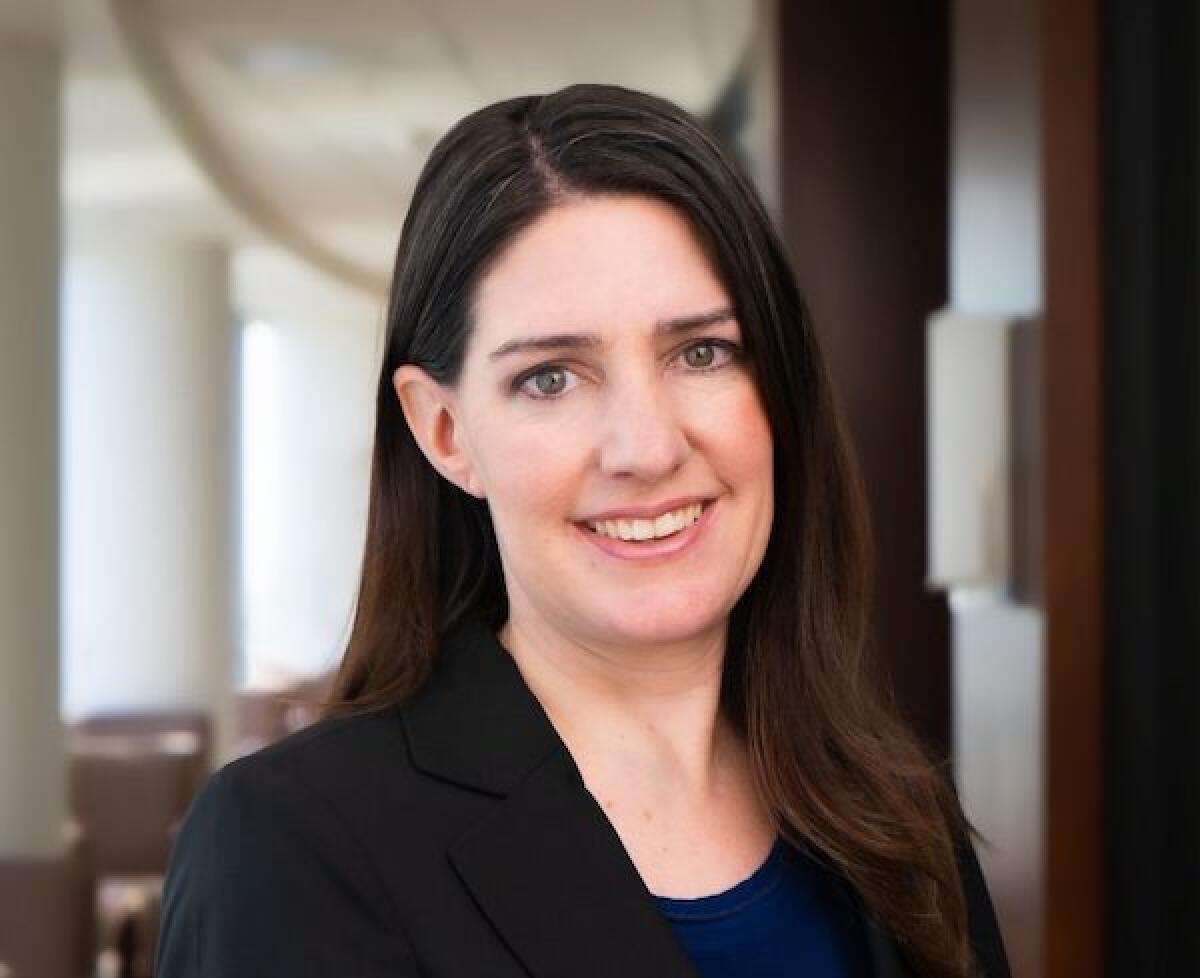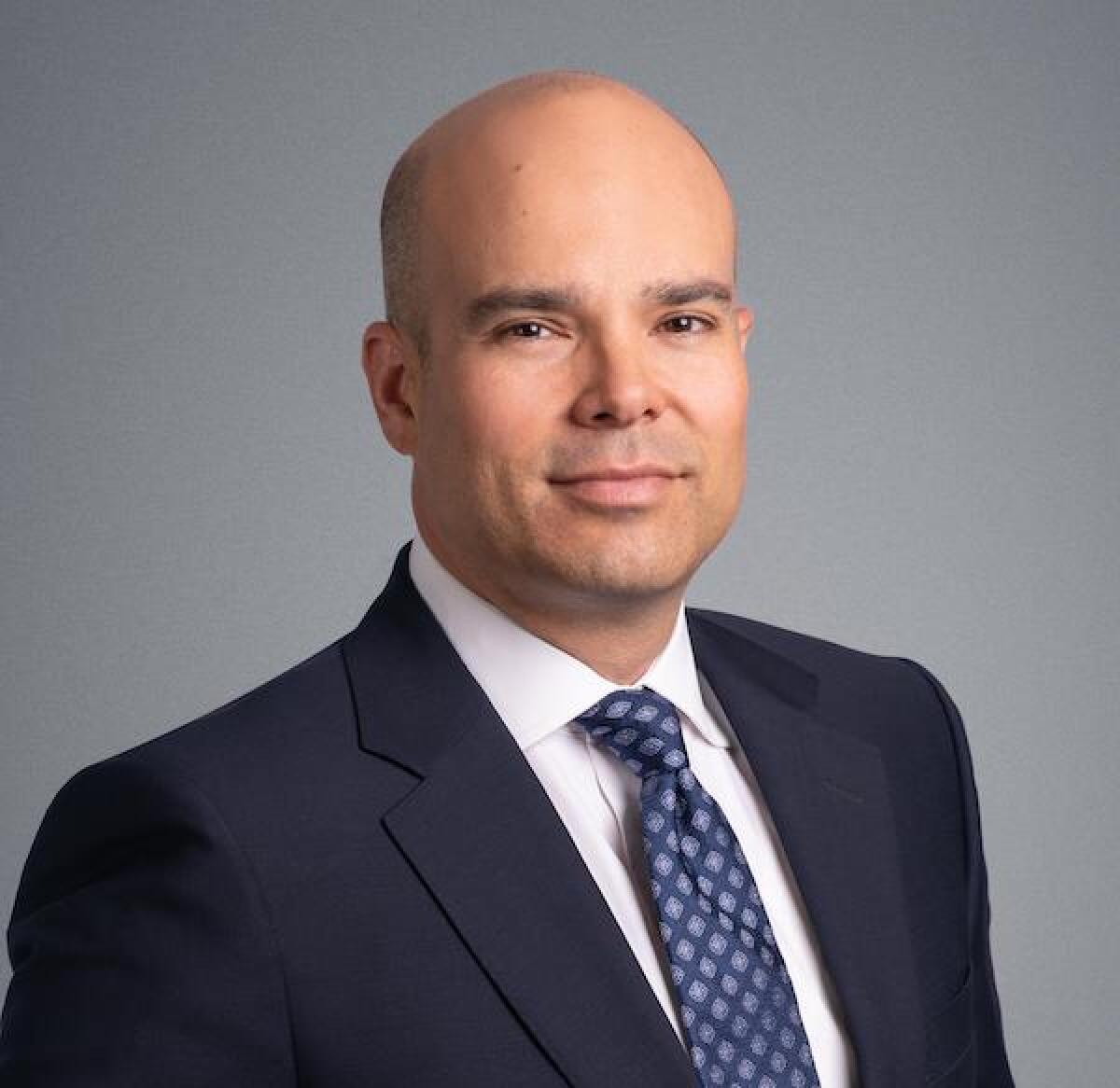Real Estate Outlook

The Real Estate Outlook panel is produced by the L.A. Times B2B Publishing team in conjunction with Allen Matkins, Kennedy-Wilson Properties, Ltd., and Wendel Rosen.
The lingering impact of COVID-19 on the global economy and the commercial real estate industry made the last 18 months unique in the history of the industry.
Commercial real estate companies have implemented new protocols, digitized many operations, adjusted workplace operational practices, and have been navigating through reopening, which has created shifts of focus, all while ensuring the health and safety of employees and occupiers and considering the financial health of tenants and end-users.
As we move into the fourth quarter of 2021, many questions still linger. What changes and trends are here to stay for the long term? What legal and financial issues need to be addressed? What new roles is technology playing? What will the real estate industry look like a year from now?
Los Angeles Times B2B Publishing turned to three uniquely knowledgeable experts for their thoughts and insights about what’s next for California’s resilient real estate sector.
Q: How did the commercial real estate industry do during the COVID pandemic? Would you say the industry is bouncing back now, or was no bouncing back actually needed?

Robin Thornton, Partner and Chair of Eminent Domain Practice Group, Wendel Rosen: As a litigator, this has been a big question throughout the pandemic, particularly for eminent domain practitioners and my colleagues here at Wendel Rosen, who were trying to determine whether a public project or the economy, in general, caused certain losses. The initial assessment appears to be that commercial real estate as a whole did not suffer as significantly or for as long as many in the right-of-way industry had initially feared; however, that is not to say that certain divisions of the commercial real estate industry were spared the tremendous impact of the pandemic. It remains to be seen whether the pandemic is truly “over” in terms of its industry impacts.

Ed Sachse, President, Kennedy-Wilson Properties, Ltd.: Retail has begun to bounce back as consumers feel more comfortable to visit restaurants, shops and enjoy service and entertainment-oriented experiences again. Meanwhile, the office market has CEOs trying to decipher their space needs with the ever-changing balance of work-from-home flexibility versus the efficiency of being back in an office. Over the next 12 to 18 months, CEOs will figure out the right balance for their companies and execute the plans to secure their appropriate space requirements. As the pandemic shows signs of decline and with schools open, we’ll see more people return to work at the office. As such, many tenants are extending current leases on a short-term basis until they determine their future needs. We see tenants are considering smaller footprints in offices and adopting the hoteling model where possible, both trends we expect to increase in the next year.

Alain M. R’bibo, Partner, Co-Chair of the firm’s Century City Real Estate Department, Allen Matkins: It’s no secret that certain sectors of commercial real estate did extremely well during the pandemic, most notably industrial distribution centers. With more people than ever working and shopping from home, the demand for industrial distribution centers across the state and the country has skyrocketed, which has led industrial rental rates to increase significantly and vacancies to virtually disappear. The trends that were happening in commercial real estate before the pandemic were only further accelerated by COVID. There was already a large trend of consumers shifting their shopping habits online, and this grew significantly over the past 18 months. Pre-pandemic, retail was already suffering, aside from high-end shopping destinations such as The Grove, Westfield Century City, or The Americana at Brand. The pandemic just accelerated that process. The hospitality industry is somewhat of an exception. Hospitality was thriving pre-pandemic, but the shutdown of travel brought it to a virtual standstill. We’re seeing it begin to bounce back now, as there has been a great need and pent-up demand for travel among consumers and that’s really beginning to show itself.
Q: Do you think we’re past the dark retail shutdowns of 2020? CNBC reported a surprising bounce back for retail consumers, despite the delta variant spikes.
Sachse: Since the introduction and distribution of the vaccine, we are seeing retailers and event experiences open or adapt with the proper precautions. Today, the consumer has become accustomed to reasonable COVID protocols when entering a restaurant or retail store or a personal services company. If the number of customers is limited inside a store, most consumers are comfortable with a short waiting period, as well as wearing a mask and social distancing. People want to go to their local coffee shop or their favorite salon; everyone misses the retail experience and is pushing to get back into normal life. For those communities that are more COVID compliant, they’re already experiencing economic growth. Our commercial real estate industry is linked to the success of lessening the COVID-19 impact.
“With more people than ever working and shopping from home, the demand for industrial distribution centers across the state and the country has skyrocketed, which has led industrial rental rates to increase significantly and vacancies to virtually disappear.”
— –R’bibo
Q: How has the COVID-19 pandemic impacted property tax valuations in California?
Thornton: I expect that the pandemic has had a greater impact on residential assessments over other types of property assessments. People were moving or renovating their existing spaces, all of which create the potential for new or increased base year values. The base year value generally controls a property’s assessed value unless there is a demonstrable decline in value below a property’s adjusted base year value. It appeared that few, if any, residential markets experienced such a decline as buyers clamored for homes amid limited inventory. It is also possible that some goods-producing properties may seek utilization adjustments if reduced utility reduced market values. I expect it to be a hot topic of conversation among practitioners here at Wendel Rosen, to see where the dust settles on pandemic-driven lifestyle changes to determine the broader impact on other types of properties, such as office properties and commercial real estate.
Q: What are the key opportunities and risks for developers in 2022?
R’bibo: One opportunity I’m seeing for developers is the repurposing of distressed assets that have lost some desirability, such as the conversion of less experiential retail projects into offices or even multi-family projects. This also is a time to look out for bargains, as less sophisticated real estate owners get shaken out of the market after having suffered through vacancies and moratoriums. In terms of risks, investors in the multi-family space in particular need to be careful of which jurisdictions they invest in, as some may have high levels of tolerance for rental protections, rent relief, and moratoriums, making it difficult to enforce lease agreements. Specifically, the pandemic has taught multi-family owners, operators, and developers that they need to be very mindful of the enforceability of their rights as landlords in the jurisdictions in which they choose to invest.
Sachse: Great opportunities exist today for developers to acquire properties in distress due primarily to extended vacancies. This puts pressure on rental property owners to either replace the defaulting tenants, which may be challenging in some markets, or potentially sell those properties altogether. In most cases, developers are looking for real estate that’s underdeveloped or may be repurposed for a higher and better use, such as a mixed-use project with apartments over retail (taking advantage of the density bonus potential), medical or even last-mile distribution. The pressure created by COVID-19 on some properties and owners, combined with the abundance of available capital in the market today, creates critical opportunities for developers. In terms of risks, construction costs due to labor shortage, delays due to COVID-19 construction regulations, as well as the shortage of construction materials, all present risks to developers, which are difficult to predict. As for pro forma rents, developers cannot simply rely on market growth. As we enter 2022, they must focus on rent affordability by understanding the revenue potential at a specific location. In addition, developers would be wise to expect a low ramp-up schedule of rent increases for the first couple years to mirror revenue growth, allowing tenants to establish their business before full rent kicks in. Regarding tenant improvement construction, cities are really backed up, so tenants aren’t able to obtain timely approvals. We are seeing construction projects extended considerably - to almost double the time frame. A project that would normally take three months to complete could now take six months.
Q: In what ways is it anticipated that increased investment in infrastructure will impact California property rights?
R’bibo: There is an entire segment of real estate owners and investors who track improvements to public transportation and actively look to invest in and improve assets in proximity to those corridors. Due to this, the more California invests in public transportation, the more investments there will be in real estate in and around those areas. Similarly, preexisting owners in those markets will also invest in significant improvements to these communities that exist near public transit. Regarding the public’s recent pandemic-related flight from public transportation use, I don’t see this trend continuing in the long term. With increased traffic congestion throughout the state, and in Southern California in particular, driving everywhere is just not an option for many. As people get more comfortable with going back into the workplace, I think we’ll see a return to widespread use of public transportation. As California continues to invest in public transit, people will return to it in larger numbers and communities adjacent to those improvements will flourish and benefit.
“The office market has CEOs trying to decipher their space needs with the ever-changing balance of work-from-home flexibility versus the efficiency of being back in an office.”
— –Sachse
Thornton: In my experience with juries, people are often surprised that the Constitution authorizes the government to take private property by eminent domain. I expect that increased infrastructure investment may prompt greater use of this power as various infrastructure improvements are expanded, particularly those such as rail and utility lines that don’t have the flexibility to maneuver around properties that an owner does not wish to sell. I expect that the investment-backed acquisition of property interests for infrastructure projects, coupled with the recent adoption of Senate Bills 8, 9, and 10, which streamline the development of denser housing in response to the housing crisis, will lead to an increased division and transfer of property rights near employment and transit centers. It is likely that Wendel Rosen, and similarly situated firms, with diversified eminent domain and land use practice areas, will be well-suited to address the issues that are sure to follow.
Q: What do you consider to be the most meaningful positive trend in commercial real estate right now?
Sachse: Landlords are more flexible and willing to work with tenants. We’re seeing both office and retail property owners offer a lower starting rent for the first six to 12 months so tenants can open and get settled. They’re also offering longer periods for permitting and construction. This allows landlords to attract quality tenants and tenants to capture quality locations. We advise owners to do whatever they can to keep good tenancies. If a business is strong, we recommend landlords be flexible, whether it’s rent deferrals or a blend-and-extend. Ultimately, the cost to replace a good tenant may be greater than the cost to save them. Today, most tenants at properties we manage continue to pay full rent. Our collections average about 94% for office and 86% for retail, and many tenants in arrears are starting to pay it back, which is a very positive sign.
“Rather than having a dedicated office space that lies dormant when one is working from home, individual offices increasingly are being converted to “hoteling” offices that may be checked out for use as needed.”
— –Thornton
Q: What do tenants need to be thinking about as they seek new spaces in 2022?
R’bibo: Businesses that are leasing office space need to think creatively about how to offer their employees great spaces that will attract them back to the office to work in a collaborative environment again. This will require an emphasis on open spaces, which was a focus for businesses even before the pandemic began. Large, open common areas provide environments that encourage employee collaboration and will be more desirable than ever moving forward. I don’t think tenants should focus too heavily on creating socially distanced work environments. This concept should fade eventually, as businesses are requiring all employees who come into the office to be vaccinated, which will give people comfort to operate and collaborate in a more traditional way without distancing. Granted, many groups have spent a lot of time working remotely and it will take time to bring them back to the office and get them used to that lifestyle change. But ultimately, there is no substitute for the productivity and efficiency one gets from sharing a workspace with your co-workers.
Q: What parts of L.A. County do you see as “hot spots” for commercial development?
Sachse: Culver City is a key hot spot and we’ve seen tremendous growth since the development of The Culver Steps, The Platform, Ivy Station and so many other great projects. A big driver for the area is office absorption by tech and entertainment companies such as Amazon, HBO and Apple, with their proximity to the Metro Expo Line an appealing feature for employees. Restaurants, grocers and personal services are moving into the market to plant their flags at Culver City’s incredible mixed-use destinations. For example, our Kennedy Wilson Brokerage team recently closed a major deal with Erewhon Market at The Culver Steps whose strong roster of tenants already includes Sephora, Mendocino Farms, Salt & Straw, Philz Coffee and CorePower Yoga. Santa Monica is also showing growth where portions of Wilshire Boulevard have been up-zoned to mixed-use, allowing investors to reposition underutilized properties and develop much-needed housing.
Q: How might the hot housing market impact typical non-disclosure litigation?
Thornton: As competition for housing has increased, efforts to snap up available inventory have become more extreme. It is not uncommon to see properties in various states of disrepair with multiple offers well above asking. Frenzied buyers may overlook disclosures that have been made, and sellers wishing to capitalize on the hot housing market may not give the disclosures the attention they require. This creates a near-perfect storm for non-disclosure litigation. I expect some degree of buyer’s remorse from cash-strapped buyers as property defects are discovered after purchase to drive efforts to hold sellers accountable for repairs. Sellers who placed too much emphasis on “as is” sales or who lacked appropriate experience or guidance with the disclosure process may find themselves seeking out firms like Wendel Rosen to address claims for which they are liable.
Q: What are tenants currently demanding in 2021?
Sachse: There are three common tenant demands in today’s market: The first is an extended time period for obtaining permits, approvals and construction as municipalities are backed up and construction times have extended. Secondly, it’s become more common for tenants to request a ramp-up of rents in the first six or 12 months of the initial lease term, rather than paying full price out of the gate. Lastly, it’s become a regular ask by tenants to address a plan for rent relief or deferment related to future pandemics. This is a continually evolving topic that is still in the works.
Q: What are your predictions for what the office of the future will be like?
Thornton: I think what we are seeing take root, including here at Wendel Rosen, is the concept of a rotational office structure to accommodate a hybrid of in-person and remote working. Rather than having a dedicated office space that lies dormant when one is working from home, individual offices increasingly are being converted to “hoteling” offices that may be checked out for use as needed. If this trend continues, it may allow offices to accommodate more workers within a smaller footprint. To the extent office spaces remain the norm, I think we will see an emphasis on isolated spaces with air purification and handsfree technologies over the prior “open concept” trend.
R’bibo: I think the future of office looks a lot like what it looked like pre-pandemic-- people still want what they’ve always wanted, which is beautiful design and open, collaborative spaces. Overall, I see employees enjoying being back in the office on a regular basis, though it will take time for people to get comfortable with the shift back to an in-office environment.